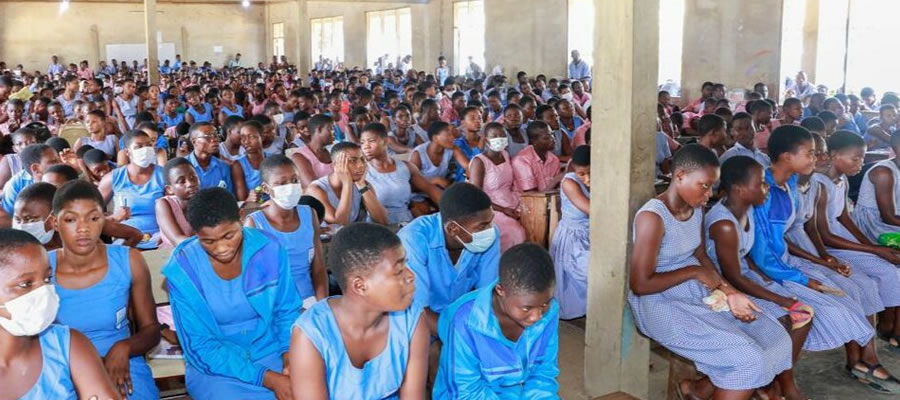

Population Size and Distribution (Urban/Rural)
The District stands at 89,777 of which 42,492 are males (representing 47.3 percent) with females constituting 47, 285 representing 52.7 percent. The District contributes 4.2 percent of the total population of the Volta Region and 0.4 percent of the total population of Ghana. The population density is estimated at 109.5 persons per square kilometer as compared to the regional and national population densities of 103.0 and 103.4 persons per square kilometer respectively. The District has 53,954 of residents representing 60.0 percent living in rural areas as compared to the regional and national figures of 66.3 percent and 49.1 percent respectively
Fertility, Mortality and Migration
The District has a Total fertility rate of 2.9, this is lower than the regional average figure of 3.38, a general fertility rate of 84.4 per 1000 women age15-49 and a Crude Birth Rate (CBR) of 21.5 per 1000 compared to the regional crude birth rate of 24.2. The Crude Death Rate is 8.3 per 1000 population. Out of the total migrants, 13,789 (representing 63.3% of total migrants) were born elsewhere in the Volta Region, 34 percent were born elsewhere in another region in Ghana. A fairly high percentage of the migrants constituting 31.4 percent have lived within a period of 1-4 years in the District.
Migration
Migration is the geographic movement of people across a specified boundary for the purpose of establishing a new permanent or semi-permanent residence. Migration in and out of The District influences the size of the population. In addition, the variations in the migration process in terms of age, sex, education and other socio-demographic characteristics can have significant impact on the overall social and economic development of The District. Migration is difficult to measure due to its repetitiveness and difficulty in establishing direction and permanency of the event. Nevertheless census information on usual place of residence five years before the census and current residence is used to discuss migration patterns within The District.
Birth place of the population by duration of residence of migrants is 21,764 migrants in the District. In terms of duration of residence, a fairly high percentage of the migrants constituting 31.4 percent have lived within a period of 1-4 years and 18.1 percent have stayed within the period 5-9 years.
Out of the total migrants, 13,789 (representing 63.3% of total migrants) were born elsewhere in the Volta Region, 34 percent were born elsewhere in another region in Ghana, while the rest (2.7%) were born outside Ghana. As indicated in Table 2.3, there are 3,529 migrants born in Eastern region representing 16.2 percent of migrants making the group the largest percentage of migrants living in the District born elsewhere in another region. This may be attributed to the District sharing boundaries with other Districts in the Eastern Region, for example Asuogyaman District.
Amongst those who were born elsewhere in another region, those from Upper East (31.1%) and Upper West (24.1%)
Date Created : 11/24/2017 3:36:41 AM










 facebook
facebook
 twitter
twitter
 Youtube
Youtube
 +233 593 831 280
+233 593 831 280 0800 430 430
0800 430 430 GPS: GE-231-4383
GPS: GE-231-4383 info@ghanadistricts.com
info@ghanadistricts.com Box GP1044, Accra, Ghana
Box GP1044, Accra, Ghana